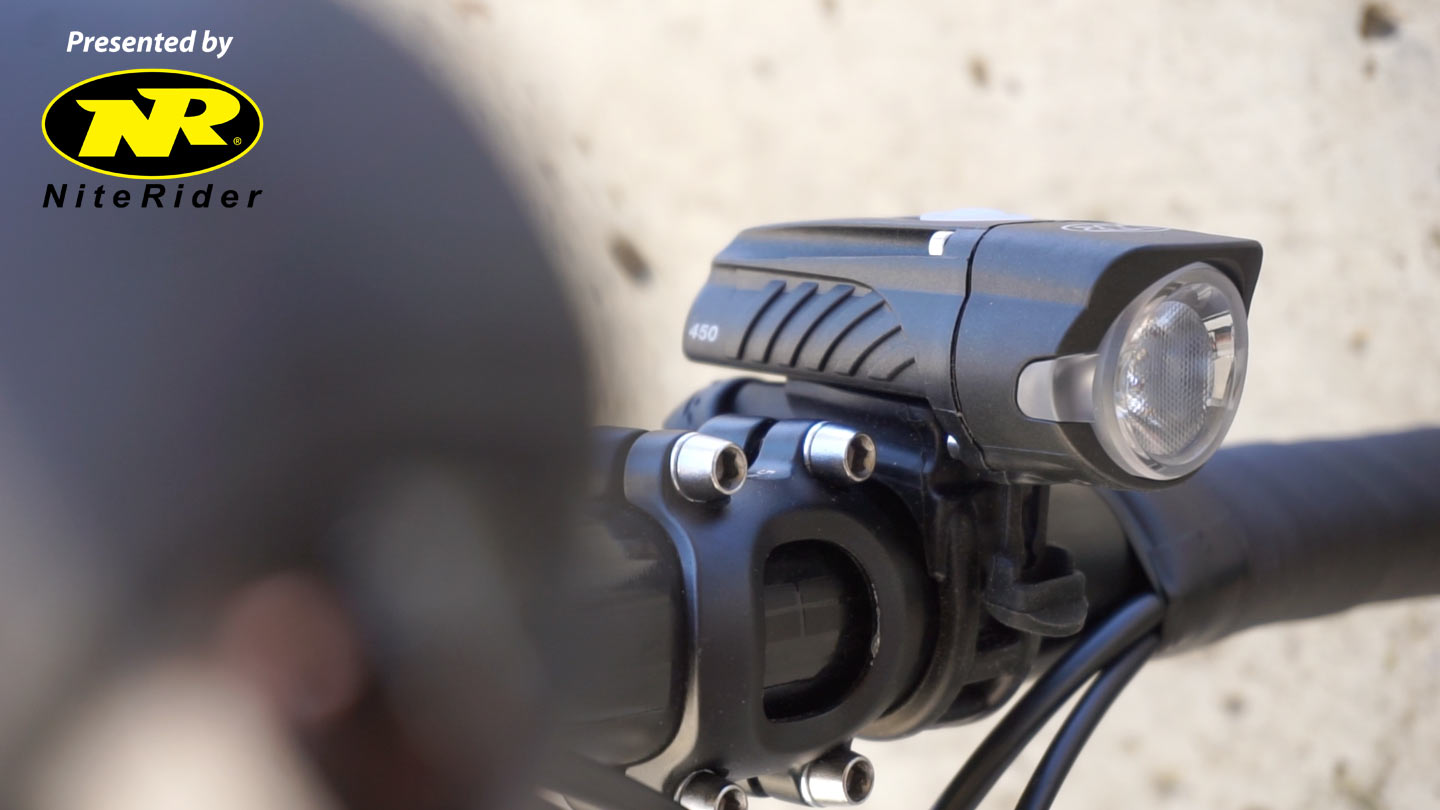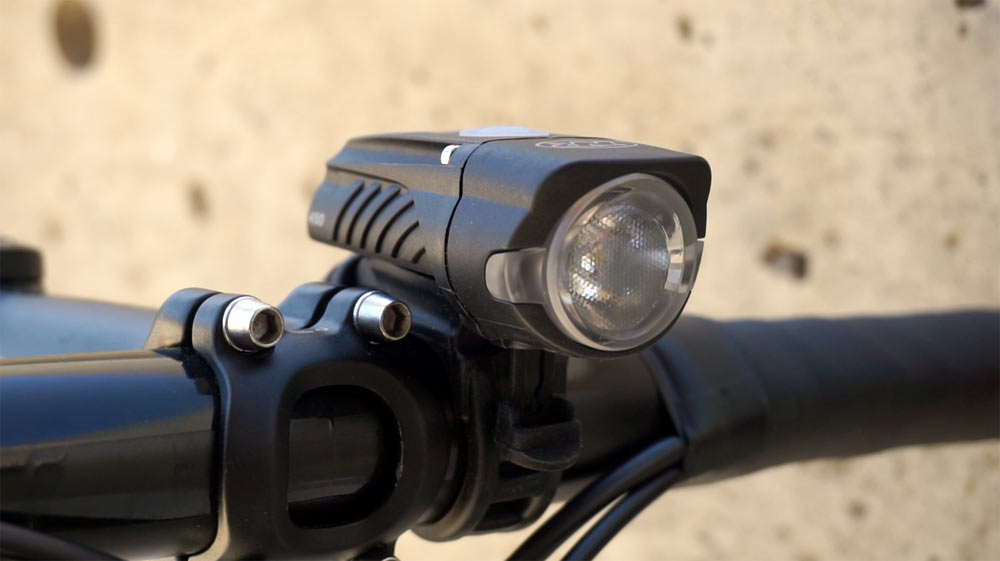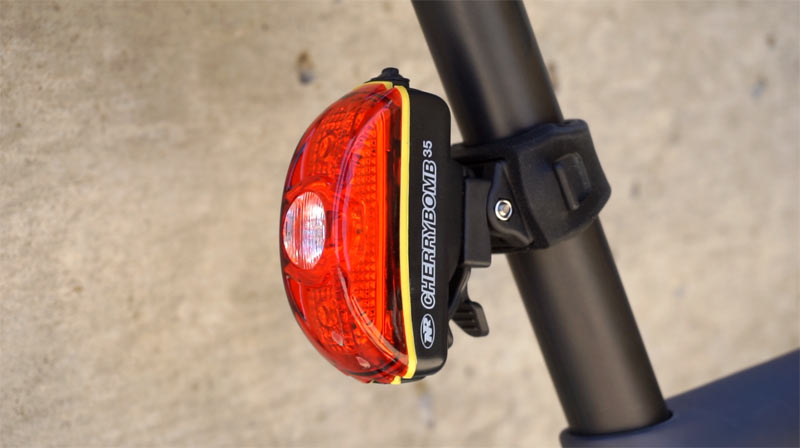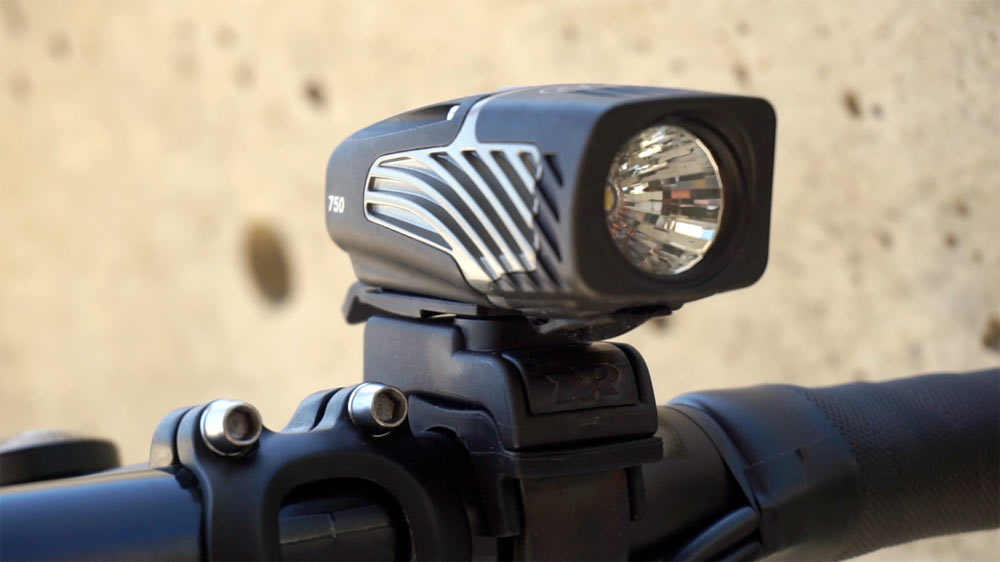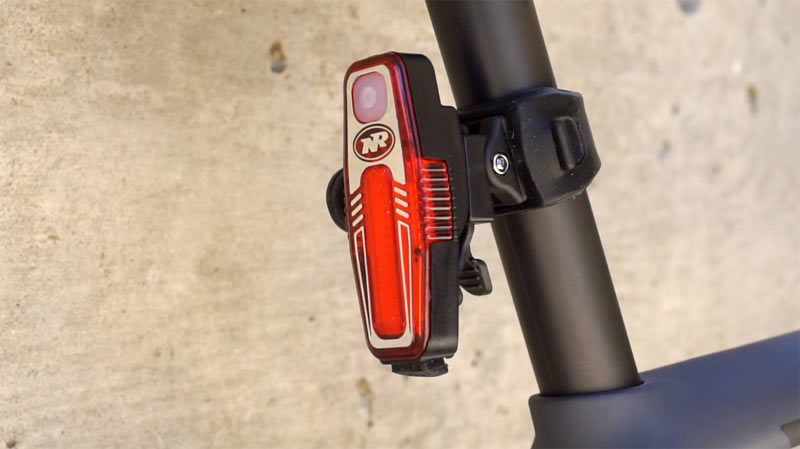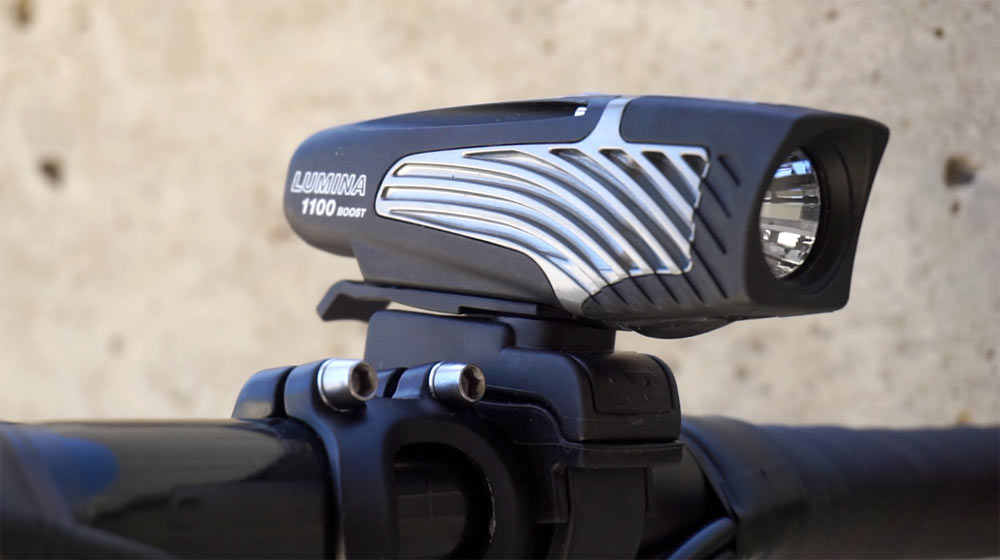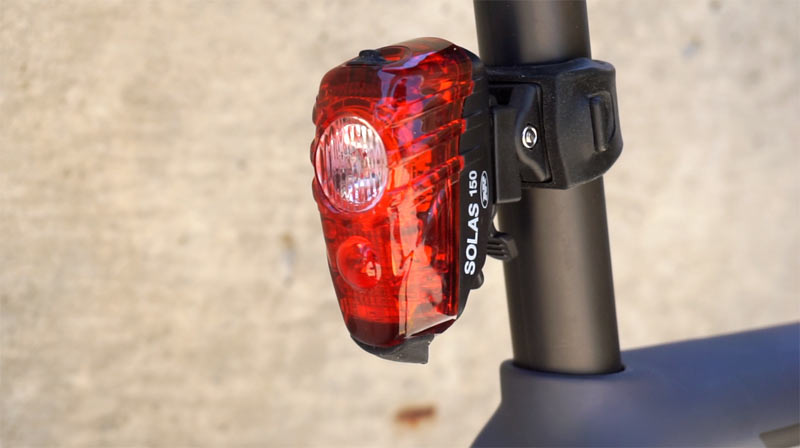Over the past few years, more bicycle light companies have started recommending their use during the day as a way to increase a rider’s visibility. We all know we should use them when it’s dark, not just to see but also to be seen. So what’s the deal with daytime use? Is it really necessary? Does it really help? Turns out, yes, and quite a bit.
We partnered with Niterider to produce this video showing how different lights, blink patterns and brightness come together to make you more visible to drivers. The good news? You don’t need to spend a lot, we found it wasn’t necessarily the brightest light that stood out the most…
The goal was to see how different blink patterns and lumen outputs affected our ability to spot the rider under adverse lighting conditions. Two of the worst are when the sun is low and beaming at the driver from the side, and when it’s directly in front of the driver and almost blinding them. But we also tested a few different scenarios in broad daylight with the sun directly overhead and clear skies. While our camera doesn’t exactly replicate what our eyes saw, the footage makes the benefits of running daytime lights very clear.
Niterider DVF Lights Tested:
We wanted to test lights across a wide spectrum of pricing and lumen outputs. Niterider has been pushing daytime use since 2012 and has a massive range of lights rated as DVF, or “Daytime Visible Flash“, which use reflectors and designs meant to optimize visibility as much as illumination. Unless otherwise noted, all models are USB rechargeable and waterproof.
At the low level, we used the Swift 450 headlight paired with the Cherrybomb 35. Since we filmed this, several models have been upgraded, so the Swift 450 is now the Swift 500, specs and notes are:
- 500 lumen output
- $34.95
- Four brightness levels plus flash mode
- 1:30 run time on brightest setting
- 82g claimed weight
- NOTES: This is the only light with a side-marker, and it has the easiest to use mounting strap. For the price, it’s hard to beat and gets the job done.
The Cherry Bomb 35 is the most affordable tail light in our test and the only one in our test that uses standard, replaceable AAA batteries. Specs and notes are:
- 35 lumens
- $19.99
- Two flash modes plus two constant-on modes
- up to 100hr run time
- 82g claimed weight
- NOTES: At just $20, this light is the perfect way to get attention. It has the same IP64 waterproof rating as all the others, has broad side visibility and up to 1 mile of rearward visibility, and the crazy flash pattern grabbed our attention better than the others.
The Lumina Micro 750 tested has also been upgraded to the Lumina Micro 850, specs and notes are:
- 850 lumen output
- $64.99
- Four brightness levels plus flash mode
- 1:30 run time on the brightest setting
- 130g claimed weight
- NOTES: Much improved strap attachment for 2019 gets rid of their convoluted wrap-thru strap system on this and the Lumina 1100. Light clips onto the mount, so you can leave the mount on the bike, or you can bolt it to the K-Edge adapter to put it on the bottom of your computer mount.
The Sabre 80 is the next step up from the Cherry Bomb. It’s brighter, and adds USB recharge-ability. Specs and notes are:
- 80 lumens
- $29.95
- up to 10:30 hours run time
- Three solid and three blinking modes
- 28g claimed weight
- NOTES: Despite the brighter output, we didn’t find a flash pattern that really stood out compared to the others. Side markers are smaller. Where it stands out is the thin form factor, helping it hide behind the seatpost for a more aerodynamic system.
The brightest of the bunch was the Lumina 1100 Boost, now upgraded to the Lumina 1200 Boost. Specs and notes are:
- 1200 lumens
- $99.99
- 1:00 run time on brightest setting
- Five brightness levels plus two flash/pulse modes
- 172g claimed weight
- NOTES: Also gets new, improved mount. Massive brightness with a standard 1000 lumen high output that can be boosted to 1200 lumens. It’s big, though, so if you’re just looking to be seen but still want that minimalist front end, go with something smaller.
In the video, I mistakenly called this the Solas 100, which they did offer, but we actually tested the brighter Solas 150. And now, it’s become the much brighter Solas 250. Specs and notes are:
- 250 lumens
- $39.95
- Up to 40 hours run time
- Two flash and two constant light modes
- 82g claimed weight
- NOTES: This one’s dim-dim-bright flash pattern was a close second to the Cherry Bomb’s best pattern, and it works because the bright flash that happens every third time calls a lot of attention to itself. Our hunch is this pattern would work best when riding out in the country where cars will have a long line of sight approaching you. Like some of the others, the dim constant-on “group ride” mode lets you keep some visibility without ruining friendships on shop rides, which is a nice feature.
How to choose the best bike light for you
What the video doesn’t show is how much brightness matters. Both in-person and on the video, once a certain level of brightness is achieved, we think a more erratic flash pattern provides more visibility than increased lumen output. That said, the Solas 150’s brightest flash does get noticed very well and was a very close second. An argument could be made that a more intermitting but brighter flash might actually catch a driver’s attention more than the near constant sparkle of the Cherry Bomb. The bottom line is both work, and the important thing is to pick one and use it on every ride.
Upfront, event the Swift 450 was visible during the day, so we’d suggest considering two factors when choosing the best bicycle headlight for your situation. First, how many other light sources are you competing with? If there’s tons of traffic, retail signage, and other distractions, go brighter to stand out above them. Second, will you need to use the light to see when riding in the dark? If so, choose the brightest light you can afford as it’ll better illuminate those dark streets, potholes, and other surprises that could cause an accident. Then just be sure to use the flashing mode during the day, and steady mode at night.
Huge thanks to Niterider for sponsoring this video and test! Check out their complete collection at the link below.
